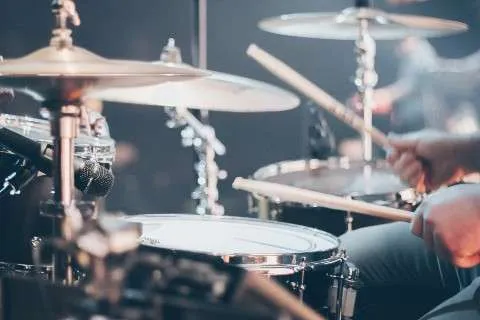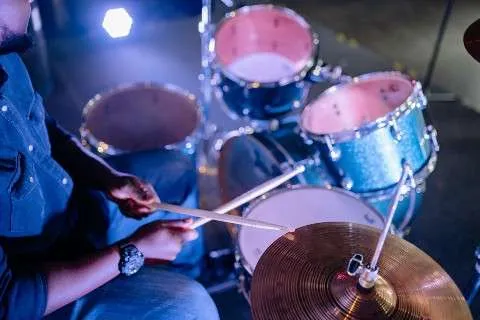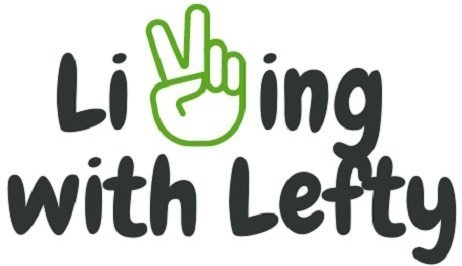Scientists and doctors believe that people are either born with a left-hand gene or a right-hand gene. However, around one-tenth of the entire population is left-handed. That said, Unfortunately, left-handed people or ‘southpaws’ often get the short end of the stick because our society is designed for the masses.
Due to this, many lefties are forced by the lack of options to adjust their brain’s wiring or unnaturally learn things. Unfortunately, such an issue is also the case in drumming. For example, the traditional playing technique for the drums is known as the cross-handed technique. However, left handed drumming involves making a few adjustments to a conventional right-handed drum kit setup. While this might sound easy on paper, it’s very challenging for a left-handed drummer to play on a right-handed drum kit. So, how do left handed drummers play drums?
Drum kit companies worldwide are now manufacturing drum kits to accommodate left-handed drummers. You can also change the layout of your kit to accommodate your preferences. So, if your dominant hand is your left hand and you want to learn the drums, no one can stop you from fulling your dream!
Table of Contents
Challenges of Playing Drums Left Handed
There is no doubt that left-handed musicians have to deal with a lot. However, most of them believe that putting in the extra effort is worthwhile. While some instruments are better for left-handers than others, all it takes is some optimism, persistence, and a whole lot of patience. With that in mind, let us look at a few challenges left-handed drummers face when playing a right-handed drumkit setup:
- Challenges With the Base Pedal
Typically, left-handed drummers are left-footed as well. This means they have to adjust a right-handed drum kit to improve playability. However, one challenge that every left-handed drummer faces while playing a right-handed drumkit is using a right-footed bass pedal. It is because a right-footed drummer can only play the bass pedal on a right-handed drumkit.
So, if you’re left-handed as well as left-footed, you’ll have to purchase a left-foot biased base pedal or train yourself to use it with your right foot.
- Challenges With the Snare Drum and High-Hat
Right-handed drummers play the snare drum on a right-handed drum kit with their left hand, if they are playing crosshanded, of course. However, left-handed drummers usually use their right hand to play the snare drum while using the crosshanded technique. So again, it will require a lot of persistence and patience to teach yourself to play the snare drum with your left hand on a right-handed drum kit.
The same is also the case for the high-hat. Righties usually use their right hand to play the high hat, if they play in the crosshanded position. It is the opposite for lefties when playing crosshanded; lefty drummers favor their left hand for the high hat.
- Availability of Left-handed Drum Instructors
When learning the drums as a lefty, you will soon realize that most drum instructors out there are right-handed drummers. So, finding someone who at least has experience teaching left handed drummers and can teach you how to play the drums left-handed will be a challenge within itself.
Are There Left Handed Drum Sets?
Unlike guitars that can be either right or left-handed, typically, drum kits aren’t made for handedness. When we talk about a left-handed drum kit, we refer only to the placement of cymbals, hi-hats, bass pedals, etc. Judging by placement, a left-handed drum kit is almost the mirror image of a right-handed drum kit. When it comes to the 2 toms attached to the bass drum, you would need to switch their places so that the order is fit for a left-hander’s drum kit arrangement. The size and pitch of the toms are arranged in a particular order and need to be followed whether you are a righty or a lefty.
For the rest of the kit (Hi-hat, cymbals, floor tom), you will just have to place it on your right-hand side instead of the left.
As for pedals, a lefty can use a right-handed single bass pedal with their left foot without facing any issues, as this part is not specifically designed for righties. It just needs to be positioned a little differently. However, when it comes to a double bass pedal, you have to get a left-handed one where the double beater is on the left pedal. A hi-hat pedal can be used by a righty or lefty.
What is Open Handed Drumming?
Traditional crosshanded drumming involves playing the hi-hat with your right hand and the snare drum with your left hand while your hands cross over each other. On the other hand, open-handed drumming, also known as playing “uncrossed” or playing with a “left-hand lead,” is a technique for setting up and playing the drum kit so that your hands don’t cross each other while playing the ride cymbal or hi-hats. It involves playing timekeeping cymbals (hi-hat and ride) with your non-dominant hand, no matter their location in your drum setup.

So, if you’re a left-handed drummer using the open-handed technique, the first thing to do is set up your drum kit so that it accommodates open-handed drumming. After that, it’s all about practicing every day and mastering the technique over time! To decide whether you should take up open handed drumming vs cross drumming, you need to know about the pros and cons about each.
Advantages of Open Handed Drumming
Listed below are a few advantages of open-handed drumming:
- It’s ergonomic
With open-handed drumming, you can set up your drum kit so that it easily works for your leg and arm lengths. Not to mention, with this drumming technique, your hands won’t get in the way of each other. Plus, your posture will improve as well.
- It Ensures More Creativity and Uniqueness
When your drum kit is set up in a non-traditional manner, your playing will sound unique.
- You can play any music genre
There is no musical situation or genre in which open-handed drumming won’t work.
Disadvantages of Open Handed Drumming
Listed below are a few disadvantages of open-handed drumming:
- Mastering the technique requires hard work
Becoming proficient at open-handed drumming requires a lot of practice, effort, and time. If you have already started learning with the crosshanded technique, you’ll have to unlearn everything and start from scratch.
- Hi-hat leads will be with your weaker hand.
Since the hi-hat patterns are more intricate than the snare, you’ll have to train your weaker hand harder to master those grooves.
- You will have to make some changes to another drummer’s kit
If you learn open-handed drumming, you will have to take some time to make minor changes to the orientation of another person’s drum kit, especially if you’re participating in a multi-band event. However, the changes won’t be as many as with a left-handed orientation change.
What is a Left Handed Drum Setup?
A left-handed drum setup is a mirrored version of a right-handed drum setup. It means most of the equipment is swapped around to accommodate a left-handed drummer. For instance, in a right-drum configuration, the floor tom, hi-hat, ride cymbal, and snare drum sit on the left side, whereas, these instruments sit on the right side in a left-handed drum setup.

In the end, if you’re a left-handed person, you probably won’t have to purchase any extra equipment as most right-handed drums can be set up for a left-handed person.
Advantages of a Left Handed Drum Kit Layout
Listed below are a few advantages of a left-handed drum kit setup:
- It allows better timekeeping
Drumming on a drum kit set up for lefties makes the entire process more comfortable for people who prefer their left hand over their right. For instance, left-handed drummers usually play the hi-hat with their left hand. Therefore, placing it on the right side will make drumming much easier.
- It allows better base pedal control
Like the hi-hat, the same is the case for the bass pedal. Left-handed drummers are typically left-footed as well. So, they will have better control over the bass drum if it is placed to the left of the hi-hat and snare from the player’s point of view.
Disadvantages of a Left Handed Drum Kit Setup
Listed below are a few disadvantages of a left-handed drum kit setup:
- You’ll face issues with other people’s drum kits
As most drummers play on a right-handed drum kit setup, you’ll probably have to take a few minutes to set up someone else’s drum kit if you’re left-handed. This means stopping a show so you can switch around the hi-hats, cymbals, and snare drum, and even switch around the tom drums’ placements.
- You’ll have to take your drum kit everywhere
As mentioned above, it will take time to set up a right-handed drum kit for a left-handed drummer. However, some people prefer to bring their own drum kit to gigs. While this might seem like a no-brainer, traveling with your left-handed drum kit everywhere will add to the stress of playing a good show.
- Availability of drum instructors and learning material
Most online learning material is for right-handed drummers. So, if you own a left-handed drum setup, you will probably have to transcribe your drum lessons to accommodate your dominant left hand. Also, it might be confusing for you if you’re just starting.
How to Set Up a Drum Kit Left Handed
The bass drum is the first thing you need to set up in a drum kit. Typically, you’ll place this in the center-front of your drum kit. While you’re at it, you should also set up your bass drum pedal. Before moving on to the other pieces, you will have to switch the toms’ places; left to right and right to left, using your drum key. Next, take out your hi-hat and place it on the right side of your drum kit. However, ensure a wide enough gap between the hi-hat and the bass pedal. Also, adjust its height according to your preference.
Next, take out the snare drum from its packaging and place it between the hi-hat and the bass drum pedal. Furthermore, if you have a ride cymbal, place it in front of your hi-hat on the right side of your bass drum. Crash cymbals should also be placed alongside the ride cymbal. Finally, place the floor tom on the left-hand side, left to the bass drum.
Advice and Practice Tips For Left Handed Drummers
Various things in life don’t accommodate left-handed individuals. However, lefties can quickly adapt to any drum kit with good advice and practice. With that said, listed below are some advice and practice tips for left-handed drummers.
Stick to What You Know Best
If drumming on a mirrored drum kit is your thing, then stick to it. It will enable you to get the most out of your drumming technique. After all, the more comfortable you are with your drumming technique, the better you’ll get over time.
Learn to Play with Both Hands
If you’re a left-handed drummer and want to play multi-band events, it would be wise to train yourself to become ambidextrous. Doing so will allow you to jam freely on any drum kit set up, whether left-handed or right-handed.
Play Some Basic Beats on Every Drum Kit Setup
Playing a few basic beats covering every drum kit setup is the best thing to do if you’re a left-handed beginner. Sure, it won’t be easy initially. However, once you get the hang of things, you’ll be able to play on every drum kit configuration.
Learn To Play Open-Handed
There is no shadow of a doubt that open-handed drumming is the way to go for left-handed people. In fact, there are more open-handed drummers today than ones who play left-handed drum kits. Therefore, if you learn to play open-handed, you can play on any drum kit setup.
Best Left Handed Drummers
Below is a list of drummers who play left-handed:
Phil Collins
Phil Collins started his music career with the group called Genesis. A British drummer, record producer, multi-instrumentalist, singer, songwriter, and actor, Phil Collins set the stage on fire when playing the song ‘In the Air Tonight” with his left-handed drumming technique.
Mike Gibbins
Originally the drummer for the group called Badfinger, Mike Gibbons is another famous left-handed drummer. He was of Welsh descent. Sadly, Gibbons died at 56 on October 4th, 2005.
Ian Paice
Ian Paice was the drummer for the group called Deep Purple. He played left-handed on his famous drum kit manufactured by Pearl drum.
Glen Graham
Famously from Blind Melon, Glen Graham is another left-handed drummer who joined the group in 1990.
Left-Handed Drummer Right-Handed Kit
Listed below are a few drummers who played left-handed on a right-handed drum kit:
Ringo Starr
Sir Richard Starkey, also known as Ringo Starr, is a British drummer, singer, actor, and songwriter. He is best known for his role as the drummer for the world-renowned band “The Beatles.” He played left-handed on a right-handed drum kit.
Dennis Wilson
Dennis Wilson was an American songwriter, singer, and drummer. He was the founding member of the group called Beach Boys. However, he was ambidextrous and could switch his lead hands depending on his band’s song.
Clem Burke
Like Ringo Starr, Clem Burke is a left-handed drummer. However, he typically plays a right-handed drum kit setup. He is famously known for playing the drums for Blondie and Empty Hearts.
And that brings our discussion on left handed drumming to an end. If you are a left-handed drummer, we hope you can put our advice and tips to good use and become a master at your craft. Happy drumming!

